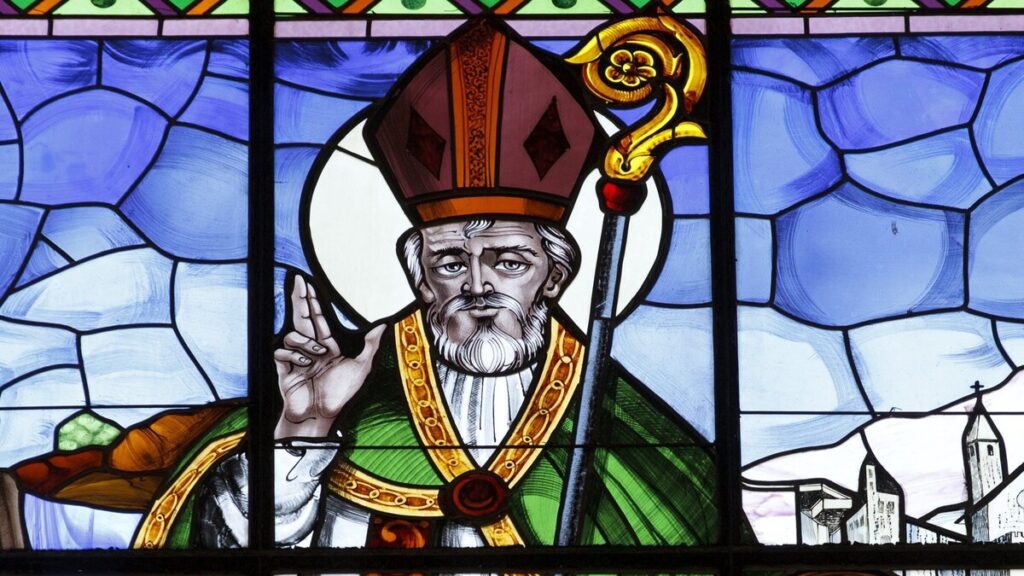
The History of St. Valentine's Day: The Saint of Love and Friendship
By: Fernanda Pierorazio
The history of St. Valentine includes many legends, and there are different versions of the saint’s exact origin. It is even believed that there was more than one Valentine

Almost everywhere in the world, February 14 is celebrated as St. Valentine’s Day, a date associated with love and friendship.
Over the years, this date has gained commercial importance, but its roots are pre-Christian.
According to various traditions, this celebration was originally a three-day pagan holiday in ancient Rome called Lupercalia, which marked the beginning of spring and was a celebration of fertility.
Another tradition attributes this celebration to a Roman festival called Juno Februata, during which young people chose their future partners by picking a name out of a paper box. For many, they would eventually marry.
According to an English text from “The Parliament of Foules” by author Geoffrey Chaucer, this celebration originated at the time when birds began to reproduce, a date that coincides with the beginning of spring in the Northern Hemisphere.
Others, however, place the origin of this story in Rome in the third century, just as Christianity was beginning to spread. At that time, Emperor Claudius II the Gothic (268-270) issued a law forbidding young men to marry so they would not have family ties when they joined the army. According to legend, he enacted this law to prevent the increase of Christian marriages and thus the multiplication of Christian families. However, a young physician-turned-priest named Valentinus thought this law was unjust, so he defied the emperor by secretly celebrating marriages. After being discovered, Valentinus was arrested and sentenced to death. According to legend, Officer Asterius, who was left in charge of Valentinus at the emperor’s request, had a blind daughter named Julia. Asterius, desperate to restore her sight, challenged Valentinus, to whom several miracles had already been attributed, to grant his daughter her sight. The priest granted his request and, in the name of God, miraculously restored Julia’s sight and converted Asterius and his entire family to Christianity. Valentinus, however, remained a prisoner, and on February 14, 269, he was stoned to death and beheaded.
Another version of the story dates to the fourth century in the Italian city of Terni, where Crato, a wealthy professor of Greek and Latin, offered Bishop Valentinus half his fortune to cure his son of a physical deformity. The bishop refused the money and instead prayed for the young man, who was completely cured. According to tradition, this miracle led to the conversion of Crato and his family to Christianity. However, this did not prevent Valentinus from being executed on the Via Flaminia in Italy.
While different traditions and legends exist, they all have one element in common: love. During the expansion of Catholicism, the church established various festivals and celebrations to eradicate pagan practices and rituals. In 496, Pope Gelasius decreed that the anniversary of the death of St. Valentine should be celebrated on February 14.
However, during the Second Vatican Council and under the pontificate of Pope Paul VI, the feast of St. Valentine was removed from the Catholic calendar in 1969 because of the proliferation of legends and the diversity of versions concerning the concrete origin of the story and the origin of this saint.
Since then, the church has assigned February 14 to the invocation of St. Cyril and St. Methodius. Although St. Valentine is still included in the martyrology, which justifies the celebration of his day in some areas.
The Three Valentines
Today, religious pilgrimage sites have been identified in Italy related to St. Valentine.
One of them is in the Basilica of Santa Maria in Cosmedin, located in Rome, which was built in the sixth century and preserves in its interior a crystal reliquary containing the skull of St. Valentine.
Another is in the Basilica of St. Valentine in the city of Terni, Italy, which has under its altar the body of the bishop of Terni, who would become St. Valentine.
The third is also in Italy, in the Church of St. George in Monselice, province of Padua, which has a tomb containing remains attributed to St. Valentine.

